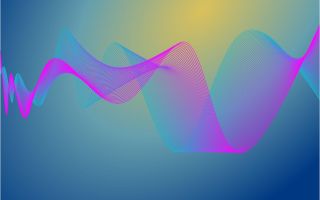Neuroscience
Unlocking Joy: The Surprising Science Behind Why We Dance
Key points
- Moving to a beat is rare in the animal kingdom.
- Parrots and humans are among the few beat-keeping dancers, both capable of complex vocalizations.
- Dancing may be a byproduct of neural architecture required for advanced speech.
Have you ever wondered why dance feels so natural? When a captivating rhythm fills the air, many people instinctively start to move. The ability to synchronize our bodies to music appears to be deeply ingrained in human nature. But why dance? The answer might lie in a surprising connection to our capacity for complex speech, a trait we share with few other species, such as parrots.
A Rare and Intriguing Ability
The science of beat perception and synchronization (BPS) reveals that the ability to move in time with an external rhythm is exceptionally rare. While many animals exhibit rhythmic movements, only a select few can adjust their movements to match an external beat. Humans excel at this, alongside parrots, showcasing a unique cognitive ability. Videos of parrots grooving to music demonstrate the remarkable extent of this shared characteristic.
What makes this parallel even more intriguing is that both humans and parrots are considered "advanced" vocal learners. Most animals have a fixed set of vocalizations, but humans and parrots can learn and reproduce complex sound patterns, like speech. This suggests a possible link between complex vocal learning and beat synchronization.
People Also Ask: Is Dancing a Learned Behavior?
While the innate drive to move to music may be present, the specific styles and techniques of dance are certainly learned. Cultural influences, personal preferences, and formal training all contribute to how individuals express themselves through movement. (Harvard, 2024)
The Coordination Challenge of Speech
To understand the potential connection between speech and dance, consider the complexity of human speech. It requires precise coordination between different parts of the vocal system. The larynx controls pitch, while the tongue, lips, and jaw shape sounds into syllables and words. These systems must work together seamlessly.
Pitch emphasis on different syllables or words can drastically change their meaning. For example, the difference between "OBject" and "obJECT" highlights the importance of precise timing. This means pitch changes must occur at the right moment in the sequence of syllables, requiring remarkable temporal coordination.
The Quasi-Rhythm Problem in Speech
Speech isn't perfectly rhythmic like a metronome. It has an average tempo, but the timing varies from syllable to syllable. This irregularity prevents us from dancing to speech in the same way we dance to music. Although speech isn’t perfectly rhythmic, it is quasi-rhythmic with an average tempo. Try clapping along with the syllables as you read this sentence: "The rhythm of speech is surprisingly complex."
So, how does the brain manage this coordination? It may involve creating an internal auditory beat, a mental timeline of the rhythm we're about to produce. This internal template synchronizes the pitch-control system and the syllable-production system.
From Speech to Dance: A Fortuitous Side Effect?
This is where the connection to dancing emerges. Once the brain develops the machinery to synchronize multiple motor systems to an auditory rhythm, it can perform the simpler task of synchronizing to an external, predictable beat. In essence, the ability to dance, why we do it, may be a side effect of the neural architecture needed for complex speech. (Stanford researchers)
Evidence supporting this idea comes from several sources. Humans can learn and remember irregular temporal patterns after a few exposures. This shows that our auditory system can store complex rhythmic templates. Research on delayed auditory feedback reveals the importance of auditory rhythm in speech production. When speakers hear their voice played back with a slight delay, it disrupts their fluency; this disruption is related to rhythmic mismatches, highlighting that an auditory rhythmic code plays a crucial role in coordinating speech production.
People Also Ask: What Brain Regions Are Involved in Dance?
Several brain regions work together to support beat synchronization. Connections between auditory and motor areas are essential, as are the cerebellum, basal ganglia, and supplementary motor areas. Damage to the cerebellum can cause both speech coordination problems and overly regular syllable production, suggesting its role in maintaining the quasi-rhythmic timing of natural speech.
The Rhythmically Synchronized Brain
The neural architecture supporting beat synchronization involves several brain regions working together. Connections between auditory and motor areas are important, and the cerebellum, basal ganglia, and supplementary motor areas are also implicated. Damage to a specific cerebellar region can cause speech coordination problems and a tendency to produce syllables at overly regular intervals, rather than with a natural speech rhythm. This suggests the cerebellum helps maintain the quasi-rhythmic timing essential for natural speech.
Why Should We Care About Why We Dance?
Understanding why dance matters beyond mere curiosity. It highlights the connections between seemingly unrelated human abilities. The capacity for complex language may have inadvertently given us aspects of music and dance. This knowledge could potentially lead to new treatments for speech disorders.
For parrots, beat synchronization may remain a byproduct without a clear survival advantage. However, for humans, the ability to synchronize our movements to shared rhythms has significant social implications. It helps us bond, coordinate group activities, and create culture. Regardless of whether natural selection further shaped our dancing ability, it has become central to human social life across all cultures. It's so ingrained in our experience that we often overlook how rare this ability is among the world's species.
References
Hickok, G. (2025). Wired for Words: The Neural Architecture of Language. Cambridge, MA: MIT Press
Hickok, G. (2024). The "coordination conjecture" as an alternative to Patel's fortuitous enhancement hypothesis for the relation between vocal learning and beat-based dancing. BMC Neuroscience, 25, Article 59.
Patel, A. D. (2024). Beat-based dancing to music has evolutionary foundations in advanced vocal learning [Review]. BMC Neuroscience, 25, Article 65.


